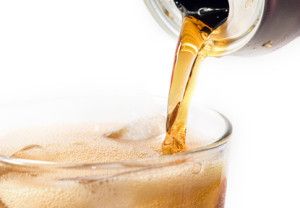
We’ve known for some time that sugar, and in particular, high fructose corn syrup play a large part in the obesity and diabetes epidemics in the United States and throughout the world. Anecdotally, many of us have also heard or experienced firsthand the ‘addictive’ effects that sugar seems to have. It does seem like the more sweet flavors we indulge in, the more we want.
WHAT IS FRUCTOSE?
A recent new study sheds some light on just why and how sugar is fueling weight gain and what may account for the addiction factor. The study focused specifically on one type of sugar – fructose. Fructose is most often made from sugar cane, corn or sugar beet. Table sugar is about 50% fructose and 50% glucose, while high fructose corn syrup contains 55% fructose and 45% glucose. Fructose is most commonly found in sweetened beverages, and is an additive in all types of processed foods.

This new study compared brain imaging reactions of study subjects to both glucose and fructose. Researchers studied 20 healthy adult volunteers, giving them beverages sweetened with either glucose or fructose. Researchers used fMRIs (functional magnetic resonance imaging) to measure the response of the hypothalamus, which helps regulate many hunger-related signals, as well as reward and motivation processing.
The study’s findings showed that glucose decreased the activity of the hypothalamus while fructose increased the activity. Research subjects taking the glucose drinks also indicated feeling corresponding fullness after drinking them, but subjects taking the fructose drinks reported increased hunger levels.
Fructose and glucose are metabolized differently by the body. Fructose prompts the body to secrete less insulin than glucose does, and insulin plays an important role in the body’s satiety signals and in dulling the reward the body gets from food. Fructose does not reduce the amount of circulating ghrelin (a hunger signaling hormone) as much as glucose does.
WHAT DOES THIS STUDY MEAN FOR US?
To summarize the study’s results, the fructose found in table sugar and high fructose corn syrup, as well as more ‘natural’ sweeteners like honey, maple syrup and agave nectar, may cause us to overeat. Fructose has the effect of increasing the activity of the hypothalamus, thereby causing hunger to increase. Fructose is a double-edged sword, because it also causes the body to secrete less insulin, which helps to moderate appetite. Finally, fructose does not reduce amounts of the hunger signaling hormone, ghrelin. All of these factors combine to create a single problem – eating fructose makes you hungrier. And the more fructose you eat, the hungrier you’ll be.
While some critics of the study say it’s the amount of overall calories a person eats that is most important when it comes to weight gain, the study authors make an important counterpoint. They state that it’s not as simple as telling people to ‘just eat less.’ “The reality is that hunger and fullness are major determinants of how much humans eat, just as thirst determines how much humans drink. These sensations cannot simply be willed away or ignored,” say study authors Purnell and Fair.

Fructose is a food ingredient that not only fails to satisfy hunger, but actually causes additional hunger. While it may not be necessary to completely avoid it, it would be wise to limit it for the sake of your health and weight loss goals.
You can stay on top of the effects of sugar and sweeteners by being aware and mindful of their effects on your own body. Making the choice to limit your sugar/sweetener intake to about once per week might be a manageable strategy for some people to retain control over the increased hunger levels that sweeteners can cause.
When you do choose to eat sugar, listen to your body for the aftereffects. If you feel increased hunger, seek out proteins and fats for satiety instead of consuming additional sugar or carbohydrates, which might begin a vicious cycle.
If you’re up for it, quitting sugar and sweeteners might be a good goal. When you’re craving sweets, turn to fruits and homemade smoothies which are high in vitamins, fiber and water, all of which will improve your health and increase satiety.
At Athlean-XX for Women, we’re all about healthy nutrition because it helps us lose weight and have energy for our tough workouts! Our nutrition plan recommends combining proteins and slow-burning carbohydrates at every meal and snack to help keep you feeling full. In fact, the Athlean-XX for Women nutrition plan is anything but a diet – we actually recommend you eat more – 5 – 6 times per day! This type of diet will help turn your metabolism into a fat burning machine – when combined with our killer 30 minute workouts. Yes, with Athlean-XX for Women, eat more, exercise shorter but harder and weigh less! Join us on Team Athlean to start your lifestyle makeover now!
And finally, if you’d like to stay up to date with the AthleanXXforWomen.com blog, then please like us on Facebook, follow us on Twitter and follow us on Pinterest.
P.S. We are a growing community dedicated to and passionate about realistic fitness and nutrition for REAL women. If you enjoyed this post please feel free to share on Facebook, Twitter and Pinterest. It would be incredibly appreciated!




